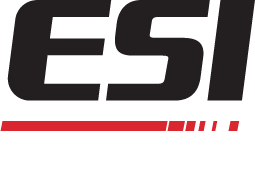Digital Print Packaging Rapidly Growing
Digital Print for Packaging is Rapidly Growing
Once limited to niche applications in the printing and packaging industries, digital print is now slated to become the standard for converters of all types. As in all industries, technology in the packaging industry is constantly adapting to be more efficient and we are beginning to see the fruits that this can produce.
Fueling the growth is a higher standard of quality expected from companies and consumers, marketing strategies developed around digital printing flexibility, and continued investment from international powerhouses. The digital printing and label printing industry was valued at $10.5 billion last year and projections show that this is just the beginning. According to Smithers Pira's market report titled "The Future of Digital Print for Packaging to 2020", digital print for packaging will grow at a compound annual growth rate (CAGR) of 13.6%. Currently digital printing is mostly utilized for labels, but is trending toward a growth in use of digital equipment to print cartons, flexibles, and more.
The Constant Battle for Attention
In any given consumer goods category there are a wide variety of products on the market. Take a trip to your local grocery store and you will see no less than 15 different frozen pizza brands in the frozen food aisle. High competition levels and varying tastes of consumers has each of these brands doing what it can to make their product packaging stand out.
According to a talk given by Fran Biderman Gross, CEO of Advantages, at the Digital Print for Packaging US conference, "brand owners need to use a continuous stream of manipulation to keep the brand constantly in mind." This is a change from the traditional wave method that only drives attention temporarily. Gross is advocating for constant communication between brands and customers, and utilizing packaging is at the forefront of enabling this.
Digital printing lets brands have more freedom in customizing their packaging. For example, a brand may decide to put different region specific labeling on their soda can to further attract attention within each geographical area. To do this, companies need flexibility instead of rigid standards that a mass production run requires. Digital allows them to produce smaller batches, have a quicker turnaround, and optimize their production with a visually appealing final product.
Retrofitting Existing Equipment
Some existing machines may provide a roadblock to achieving the fast turnaround that companies are asking for. With a retrofit, packaging providers can use an existing flexo press and switch it to digital, at a much lower cost than a standalone digital machine. This opens the door for both high and low volume jobs and giving your customer more options.
To further improve packaging, printers are using ebeam technology to reduce operating costs through less ink waste, eradicating work-in-process inventory, and lower utility costs. Besides lower costs, EB allows a heightened standard of quality with resilient packaging built to withstand shipping and end up on the shelf the way it is intended. For example, EZCure LS can be added as a retrofit with digital to improve graphic protection and laminations. Use of EB with digital printing gives products a consistent cure with low odor and outstanding appearance.
Energy Sciences Inc. is the world leader in low voltage Electron Beam technology, providing a total solution to adapting production to meet changing demand. Stay in the loop with the latest packaging news and trends by subscribing to our blog, or click the button below to talk to an ESI representative about retrofitting one of your lines.

